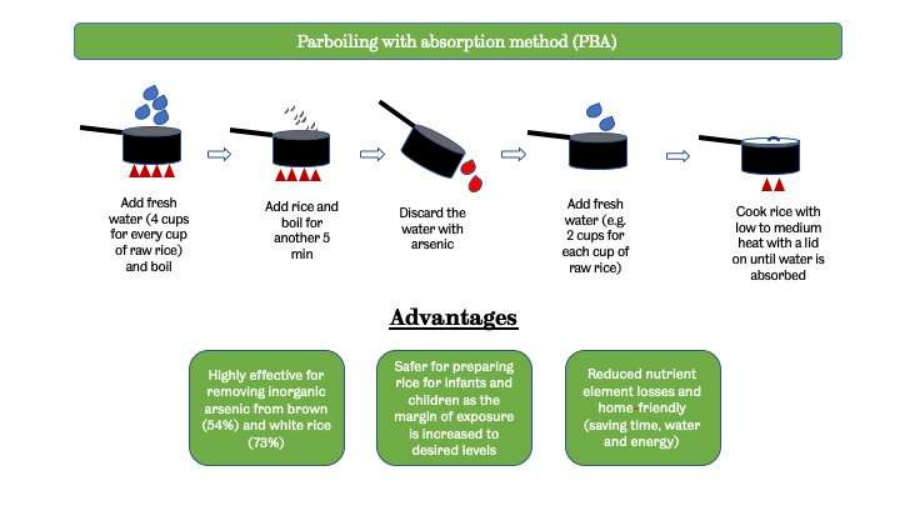Inflatable costume could be behind Covid outbreak at California hospital
A hospital in California is facing a coronavirus outbreak among its staff that might be tied to an inflatable costume worn on Christmas to cheer up patients.
At least 43 staff members tested positive for the virus between Dec. 27 and New Year’s Day, according to a statement from Kaiser Permanente San Jose Medical Center on Saturday. The hospital’s emergency department has been deep-cleaned, and all infected staff members are isolating.
The hospital is looking into whether the fan on an “air-powered costume” could have spread droplets after a staff member briefly wore it in the emergency department on Christmas Day.
“Any exposure, if it occurred, would have been completely innocent, and quite accidental, as the individual had no COVID symptoms and only sought to lift the spirits of those around them during what is a very stressful time,” the hospital said.
Kaiser Permanente San Jose Medical Center will no longer allow such costumes in its facility, the statement said.

Emergency department employees at Kaiser Permanente San Jose Medical Center who were able to get a Covid-19 vaccine were only given their first inoculation days prior to Christmas Day and would not have reached immunity by the time of the incident.
None would have had their second booster shot by Christmas Day.
“During this period, even as vaccine is beginning to be provided in our communities, it is crucial that everyone continue to protect themselves and each other by continuing to use masks, hand washing, avoid gatherings, and practice social distancing,” the hospital said.
None of the staff members who tested positive will return to work, though the hospital said it has been engaging additional staff as part of its preparations.
California hospitals have been overwhelmed with casesin recent weeks amid a new surge of the virus, which brought record numbers of daily deaths and hospitalizations.
The state’s Bay Area has only 5.1 percent availability in its intensive care units. Southern California is beset with hospitalizations, with no available beds in many of its hospitals as staff create makeshift units in gift shops or pediatric wards.
California has recorded 2,345,909 confirmed coronavirus cases, with more than 26,000 deaths, according to numbers the state’s public health department released Saturday.
original story here https://www.nbcnews.com/news/us-news/inflatable-costume-could-be-behind-covid-outbreak-california-hospital-n1252685
Ore. health care worker has severe allergic reaction to COVID vaccine
PORTLAND, Ore. (AP) — An Oregon health care worker has been hospitalized after suffering a severe allergic reaction to the Moderna COVID-19 vaccine.
The Oregon Health Authority says the employee at Wallowa Memorial Hospital experienced anaphylaxis after receiving a first dose of the vaccine this week.
The health authority said vaccines for COVID-19 can cause mild to moderate side effects in some people. This can include pain and swelling on the arm and sometimes fever, chills, tiredness and headache.
In rare cases, some people have experienced severe allergic reactions. Health officials will continue to track adverse reactions. So far, 38,698 doses of the COVID-19 vaccines have been administered in Oregon since the week of Dec. 13.
KOMO 4 NEWS SEATTLE WA https://komonews.com/news/local/ore-health-care-worker-has-severe-allergic-reaction-to-covid-vaccine
Makers of grow-your-own human steaks say meal kit is not ‘technically’ cannibalism
Article via NewYorkPost
The saying “You are what you eat” may soon become a lot more literal.
A “DIY meal kit” for growing steaks made from human cells was recently nominated for “design of the year” by the London-based Design Museum.
Named the Ouroboros Steak after the circular symbol of a snake eating itself tail-first, the hypothetical kit would come with everything one needs to use their own cells to grow miniature human meat steaks.
“People think that eating oneself is cannibalism, which technically this is not,” Grace Knight, one of the designers, told Dezeen magazine.
Before you go running for your wallet, know this isn’t a product available to buy. It was created by scientist Andrew Pelling, artist Orkan Telhan and Knight, an industrial designer, on commission by the Philadelphia Museum of Art for an exhibit last year.
“Cooking is all about people. Food is maybe the only universal thing that really has the power to bring everyone together. No matter what culture, everywhere around the world, people get together to eat”, Guy Fieri#cultivatedmeat #cleanmeat #kitchentissueengineering pic.twitter.com/R0gdC5jkJ5
— ourochef (@ourochef) October 18, 2019
“Growing yourself ensures that you and your loved ones always know the origin of your food, how it has been raised and that its cells were acquired ethically and consensually,” a website for the imagined product states.
The project was made as a critique of the lab-grown meat industry, which the designers told Dezeen magazine is not actually as animal-friendly as one might expect. Lab-grown meat relies on fetal bovine serum for animal cell cultures, though some companies have claimed to have found alternatives. FBS is made from calf fetus blood after pregnant cows are slaughtered.
“Tell me what you eat, and I will tell you what you are.” – Anthelme Brillat-Savarin pic.twitter.com/xvcInFamAr
— ourochef (@ourochef) October 17, 2019
Lab-grown meat has not yet been approved for human consumption, though some products could hit store shelves in the next few years.
“As the lab-grown meat industry is developing rapidly, it is important to develop designs that expose some of its underlying constraints in order to see beyond the hype,” Pelling told Dezeen.
At Ourochef our goal is to supply everything you need to create cultivated food at home from your own cells #cultivatedmeat #cleanmeat #labgrownmeat #kitchentissueengineering ? @orkan pic.twitter.com/BTYa1tKizu
— ourochef (@ourochef) October 17, 2019
Growing an Ouroboros Steak would take about three months using cells taken from inside your cheek, the magazine reported. For the collection of sample steaks on display in the museum, the team used human cell cultures purchased from the American Tissue Culture Collection and grew them with donated blood that expired and would have otherwise been destroyed. They preserved the final products in resin.
“Expired human blood is a waste material in the medical system and is cheaper and more sustainable than FBS, but culturally less accepted,” Knight told Dezeen.
The Queen attributed Princess Diana’s failed marriage to bulimia struggles: report
Queen Elizabeth reportedly held some closed-minded thoughts regarding Princess Diana’s struggles with bulimia and even wondered whether they were what caused her relationship with Prince Charles to deteriorate.
The claim came forward in a book by Andrew Morton titled, Diana: Her True Story – in Her Own Words and according to its excerpts, the Queen blamed Princess Diana’s bulimia for ending her marriage.
The book in question was reportedly written in accordance to hidden tapes that the Princess of Wales would send of Mr. Morton during some of her lowest moments.
People magazine picked one of the princess’s reported confessions and explained how the princess’s bulimia initially began as a result of Prince Charles’s snide comments on her figure.
According to the report, “Princess Diana recalls the prince saying, ‘Oh, a bit chubby here, aren’t we?'” before pinking her waist. This was what allegedly ended up “triggered off something in me.”
Even royal author Ingrid Seward admitted, “[Diana] was bulimic” in her documentary titled Fergie Vs Diana: Royal Wives at War. Reportedly, “The queen always said she’s like a nervy racehorse and said treat her with kid gloves. Later on they blamed the failure of Diana’s marriage on her bulimia which wasn’t really the case at all.”
Another royal expert also chimed in during Seward claim and added how Princess Diana “was unsure of herself and she was very emotional. The royal family are not used to people who emote.”
“You don’t do that; you have a stiff upper lip. If you wish to cry you go to your room and do it there but Diana wasn’t that sort of person. She showed her emotions, she couldn’t help it.”
Article via The News
Supreme Court appears willing to leave Obamacare in place
Article via CNBC
- The Affordable Care Act seems likely to withstand its third challenge at the Supreme Court.
- During arguments in a case seeking to eliminate Obamacare, two of the court’s conservatives on Tuesday signaled they would not strike down the landmark legislation.
- Chief Justice John Roberts and Justice Brett Kavanaugh suggested that the court may cast aside the individual mandate while leaving the rest standing.
The Affordable Care Act seems likely to withstand its third challenge at the Supreme Court.
During arguments in a case seeking to eliminate Obamacare, two of the court’s conservatives on Tuesday signaled they would not strike down the landmark legislation.
Chief Justice John Roberts, who cast the key vote in 2012 upholding Obamacare, and Justice Brett Kavanaugh, an appointee of President Donald Trump, suggested that the court may cast aside a challenged provision of the law, known as the individual mandate, while leaving the rest of it standing.
Such a decision would leave in place the central aspects of the 900-plus page legislation which have transformed American health-care over the past decade, from the expansion of Medicaid in dozens of states to the requirement that insurers cover those with preexisting conditions.
The individual mandate provision, as enacted in 2010, requires most Americans to obtain health insurance or pay a penalty. The GOP-controlled Congress reduced the penalty to $0 in 2017.
The Supreme Court upheld the mandate in 2012 under Congress’s taxing power, but Texas and other Republican-led states argued that the reduction of the penalty made that justification no longer workable, and as a result the whole Affordable Care Act must be struck down.
The Trump administration, via the Department of Justice, argued in favor of the red states’ challenge.
The court’s six conservatives seemed sympathetic to arguments made by Kyle Hawkins, the Texas solicitor general, and acting Justice Department Solicitor General Jeffrey Wall that the individual mandate became unconstitutional when it was stripped of an accompanying penalty.
But Roberts and Kavanaugh suggested that would not doom the rest of the law.
“I think it’s hard for you to argue that Congress intended the entire act to fall if the mandate was struck down,” Roberts told Hawkins. Roberts was appointed by President George W. Bush.
Roberts acknowledged that some Republican lawmakers may have wanted the Supreme Court to strike down the law, “but that’s not our job.”
Kavanaugh told Donald Verrilli, who was solicitor general under former President Barack Obama, that “I tend to agree with you that this is a very straightforward case” and that under the court’s precedents “we would excise the mandate and leave the rest of the act in place.”
Verrilli was arguing on behalf of the Democratic-controlled House of Representatives.
Later, Kavanaugh told Hawkins that it “sure seems” like Congress in 2017 wanted to lower the individual mandate penalty without getting rid of the Affordable Care Act’s other provisions, such as its protections for those with preexisting conditions.
The court’s three liberals, Justices Stephen Breyer, Sonia Sotomayor and Elena Kagan are expected to side with California and a coalition of other Democratic-led states that are defending Obamacare. Michael Mongan, the solicitor general of California, argued on behalf of the blue states. It takes five votes to gain a majority on the nine-judge panel.
The Democratic-appointees seemed skeptical of the red states’ argument that the mandate was unconstitutional, and sympathetic to California’s claim that those states lacked even the ability to sue, given their failure to prove that they had been harmed by the law.
“The only thing that changed is something that made the law less coercive,” Kagan said.
Breyer suggested that allowing the red states to bring their claim could open up challenges to all sorts of laws that would be unlawful if they included penalties, such as hypothetical statutes calling for citizens to plant trees, clean up yards or buy war bonds.
Health-care activists warned that if the Supreme Court struck down the Affordable Care Act, more than 20 million people could lose their insurance.
The dispute, which was argued in the shadow of last week’s presidential election, was a central focus of Democrats during the confirmation hearings for Justice Amy Coney Barrett last month. Barrett’s questioning on Tuesday didn’t provide much insight into her thinking about the legal issues.
Two lower courts sided with Texas, including the 5th U.S. Circuit Court of Appeals court, that the individual mandate was unlawful. The appeals court did not say whether the rest of the Affordable Care Act would also have to be struck down.
Arguments, which were scheduled to last for 80 minutes, began at 10 a.m. ET and concluded around noon. They were conducted by phone as a result of the Covid-19 pandemic and streamed live to the public.
The case became a political flash point in the race between Trump and President-elect Joe Biden, who have sketched out vastly different visions for the future of American health care. Trump pushed to gut the Affordable Care Act, while Biden’s agenda calls for building on the law, which the former vice president played a role in shepherding through Congress in the first place.
The political stakes were amplified by the pandemic, which has killed more than 230,000 in the U.S. and made health care a more salient issue.
Efforts to contain the pandemic also caused a devastating recession, which has resulted in millions losing their health-care coverage. After the late Justice Ruth Bader Ginsburg, a liberal, died in September, Democrats sought to turn the fight for her replacement, Barrett, into a referendum on the law.
A decision is expected toward the end of June.
The case is known as California v. Texas, No. 19-840
ABC Documentary Hometown HATE the war among us
History repeats itself. If we let it
2 Dick’s Drive-ins closing after worker tests positive for COVID 19
SEATTLE – Two Dick’s Drive In restaurants are closing until further notice after an employee tested positive for coronavirus, the company announced Tuesday.
In an open email to customers, the popular local burger chain said its restaurants in Kent and on Queen Anne will shut down temporarily but indefinitely.
The closures come after another employee at the Kent location tested positive. The employee was last inside the restaurant on Saturday, and all employees who were exposed to that worker will quarantine immediately.
The Dick’s Drive In on Queen Anne will also remain closed because some employees there may have been exposed to the infectious worker while helping to support the Kent location, so they also are going into quarantine.
The company said it has consulted with Seattle-King County Public Health and confirmed that the transmission risk to customers is “extremely unlikely” because its restaurants are following all public health guidelines for safe operation. Among the precautions being taken:
- Social distancing is required for customers and masking is mandatory for all employees and customers.
- All locations are sterilized daily.
- The average length of time for transactions is under two minutes, and each restaurant’s ventilation system pulls fresh air from outside the building into the building via the window ports constantly while serving customers.
- Additionally, there is no evidence of food borne transmission of COVID-19.
“We will be working closely with public health on next steps and will update you as soon as we know more,” the company said.
Original Story KOMO4NEWS SEATTLE WA
New way of cooking rice removes arsenic and retains mineral nutrients, study shows
Article via Phys.org, Credit to University to Sheffield

Cooking rice in a certain way removes over 50 percent of the naturally occurring arsenic in brown rice, and 74 percent in white rice, according to new research.
A new paper, released today in Science of the Total Environment shows that cooking rice in a certain way removes over 50 percent of the naturally occurring arsenic in brown rice, and 74 percent in white rice. Importantly, this new method does not reduce micronutrients in the rice.
Following previous research from the University of Sheffield that found half of the rice consumed in the UK exceeded European Commission regulations for levels of arsenic in rice meant for the consumption for infants or young children.
This new study tested different ways to cook rice to try and reduce the arsenic content and the team from the Institute for Sustainable Food found that by using a home-friendly way of cooking rice, the “parboiling with absorption method” (PBA), most of the arsenic was removed, while keeping most nutrients in the cooked rice.
The PBA method involves parboiling the rice in pre-boiled water for five minutes before draining and refreshing the water, then cooking it on a lower heat to absorb all the water.
Arsenic, which is classified as a Group 1 carcinogen by the International Agency for Research on Cancer, is water-soluble—so it accumulates in rice, which is grown in flooded fields more than other cereals. Arsenic exposure affects almost every organ in the body and can cause skin lesions, cancer, diabetes and lung diseases.
Rice is known to accumulate around ten times as much arsenic as other cereals. In rice grains arsenic is concentrated in the outer bran layer surrounding the endosperm. This means that brown rice, (unmilled or unpolished rice that retains its bran) contains more arsenic than white rice. This milling process removes arsenic from white rice but also removes 75-90% of its nutrients.
Dr. Manoj Menon says, “For rice consumers, this is excellent news. There are genuine concerns amongst the population about eating rice due to arsenic. Previous studies have shown that cooking rice in excess water could remove arsenic but the problem is it also removes nutrients. Our aim was to optimize the method to remove arsenic while keeping maximum nutrients in the cooked rice. Our newly developed method, PBA, is easy and home-friendly so that everyone can use it. We don’t know the amount of arsenic in each packet rice we buy; even though brown rice is nutritionally superior to white rice as our data shows, it contains more arsenic than white rice. With our new method we are able to significantly reduce the arsenic exposure while reducing the loss of key nutrients. We highly recommend this method while preparing rice for infants and children as they are highly vulnerable to arsenic exposure risks.”
Australia scientist say that coronavirus can live on services for 28 days
STAY INFORMED It is important to keep your hands washed! It is also very very important to keep your home clean and disinfected











